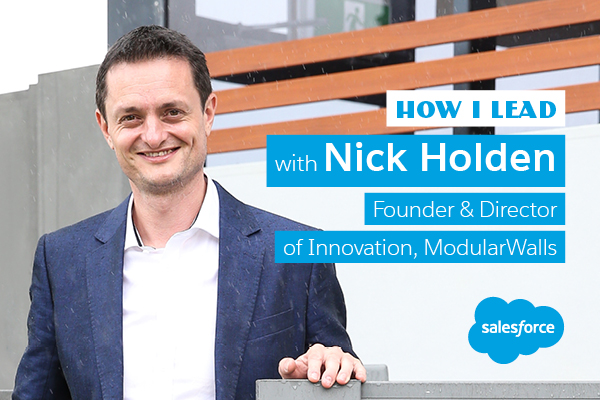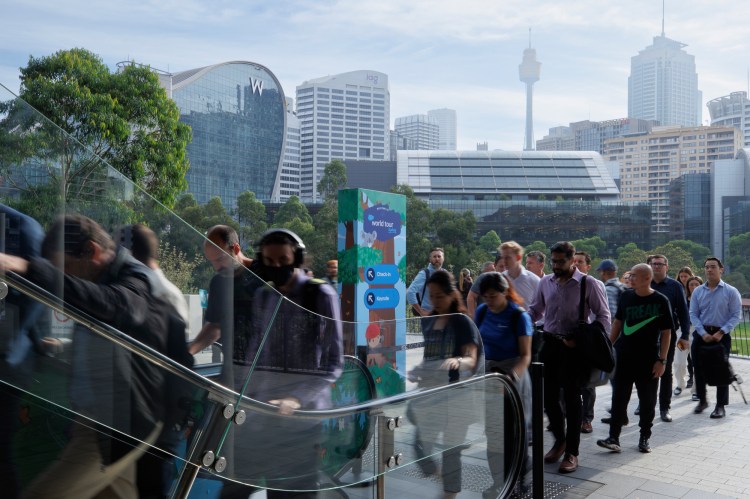How I lead: Nick Holden, ModularWalls



Despite strong year-on-year growth of 20%, ModularWalls was leaving money on the table – in the form of leads not followed up and quotes not sent. Founder and Director of Innovation Nick Holden shares the changes ModularWalls has made and the leadership approach that has allowed his business to thrive and double that growth, while keeping one eye on scaling even further.

Nick Holden
Back in the day when I had just 10 staff to work with, I could keep on top of all the communications. But we started getting more and more inbound leads and inquiries, and email and spreadsheets just weren’t cutting it.
The first thing to slip was following up quotes we’d sent out. There was no central quoting system, so all the quotes were created one-by-one and sent off to the customer in an email. That’s as far as they’d get unless the customer followed up with us.
Before long, we weren’t following up leads either. Marketing was going very well and generating an explosion of leads, but we didn’t have the right systems in place to handle them effectively, so double the leads wasn’t leading to double the revenue.
When I started getting emails from customers asking me why no one had got back to them or what had happened with their quote, that really hurt — we were leaving money on the table, but also I drive this business on customer satisfaction and responsiveness. And we were losing on both counts.
Something had to change.
A leader on the tools
When we started looking at CRM, it took me a while to get my head around it. Like many in the manufacturing industry, I was prepared to invest in machinery to help make our products — it was always easy to see why that was a good investment.
But as I weighed up the business we were losing through quotes not followed up and leads left to gather dust, I came to see that unless you’ve got the systems in place to support the sales, support the customer and support the infrastructure, that equipment isn’t the best investment either. Now I recognise the systems we have, like CRM, are another kind of machine – one that manages everything, never has a sick day and never sleeps.
So I’m no IT whizz. But I knew enough to know that I didn’t want to build another island that wasn’t integrated with all our systems, and that I did want to build a comprehensive picture of the business and of the customer.
I put myself in charge of the IT team because up to that point I’d known how to do every job here — I started out doing every job myself. I needed to know how to use the technology so that I could continue to lead in my style, so I could challenge and improve our systems and processes, and so the staff could see a leader who truly understood their jobs, as well as the challenges and satisfactions that come with them.
Technology will be a critical part of our future and I wanted to be able to help drive that.
I’ve taken myself out of my office so I’m closer to the rest of the IT team and visibly part of the team. And when it comes to the initial build of a new system framework, they use me as their testing ground – I’m their user. It’s been a really efficient way to drive the IT function and test it before it goes out for wider user feedback.
Taking on this role has been so important to my leadership. Because if you don’t understand the process, you don’t understand the business case, the user experience, and how the platform links into everything else, then you’re totally dependent on someone else and you get what you’re given.
Leaders listen first
This applies outside IT too. I know enough to know that I don’t know everything, so I always ask one of our operators what they think about new ideas we’re considering — I love seeing that engagement on their faces as they share their expertise and opinions.
Including people in innovation is a powerful way to get buy in – otherwise the reaction ends up being “Oh no, we’ve gotta make something else now”. I include the team in every innovative step we take.
I’ve seen that if I engage with people and go the extra yard for them, they’ll go the extra yard for me. Even with more than 60 staff now, it’s more important than ever that I’m still out there among them, always walking around and having a chat.
I pride myself on knowing everyone’s names and their kids’ names. The reality is that I spend more time with my staff than I do with my family, so I want to have a happy, functional, energetic workplace.
The challenge and opportunity of growth: Managing people
Growth is challenging — not just financially, but because when you have more than 60 people working under the same roof, there’s going to be a lot of different ways of doing things. Everyone’s got their own stuff going on and their own preferences for how they like things run.
So communication becomes really important. We have a monthly managers’ meeting — though I’m not keen on the word ‘meeting’ and prefer it to be considered a catch up — when each senior manager gives a brief update of the month’s challenges and achievements.
I don’t want to discuss numbers and stats read out from paper. I want to have discussions that people can take back to their teams to help them do a better job, or be more satisfied. We might talk about 20 things in a meeting and I’m happy if just one makes it back to the teams — it’s always the most important one.
And once a month we have a staff barbecue and that’s a great opportunity for people from every department to get together and connect. I always say “I don’t want to see a fluro shirt next to a fluro shirt”. No one is excluded and everyone stays informed about what’s going across the business.
Because we have all our data now on one platform we can share it really easily across the teams. I believe in being totally transparent about what that data reveals – the good, the bad and the ugly — and we have screens set up across the organisations that show figures, achievements and goals yet to meet. We are all in it together.
To find out more about the trends driving SMBs, download the Salesforce Small and Medium Business Trends report.


















